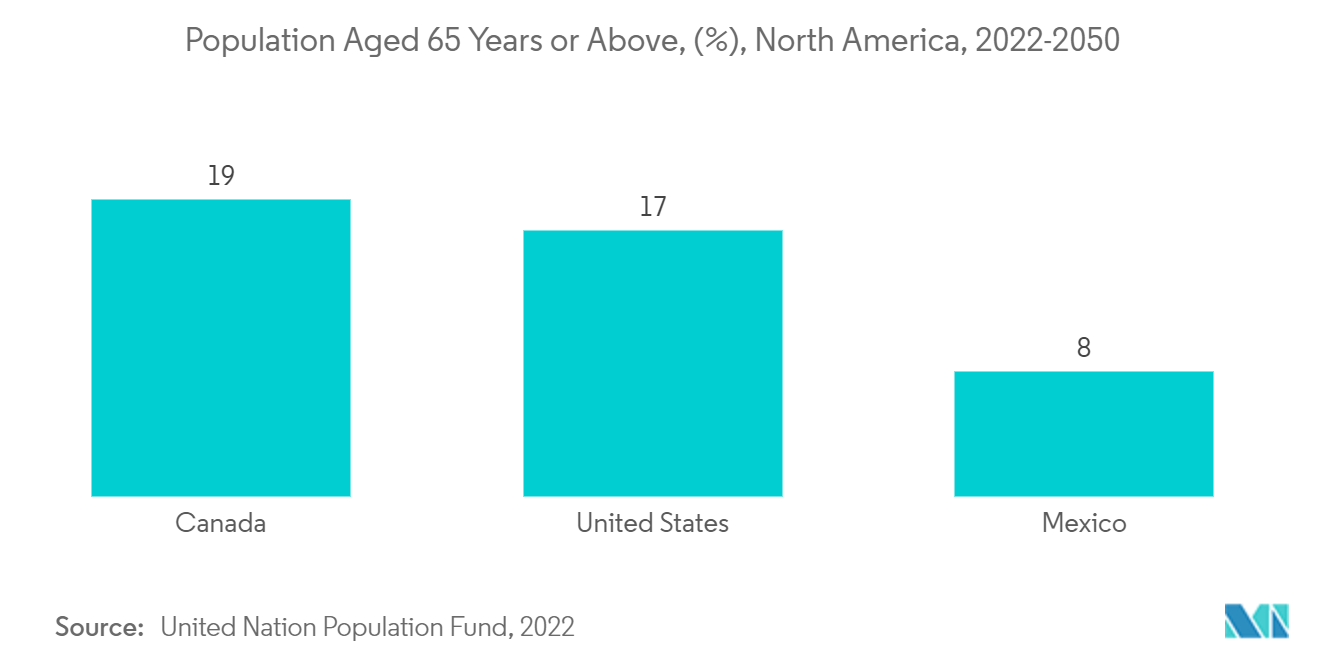Market Trends of North America Cardiac Rhythm Management Devices Industry
The Implantable Pacemaker Segment is Expected to Witness Significant Growth During the Forecast Period
A pacemaker is a tiny device that uses electrical impulses implanted in the chest to regulate heartbeat. An implantable pacemaker is a sophisticated medical device designed to regulate and maintain a patient's abnormal heart rhythm by delivering controlled electrical impulses.
The implantable pacemakers (ICPS) segment is expected to witness significant growth in the market amid factors such as the growing burden of cardiovascular diseases (CVDs), technological advancements in implantable pacemakers, and increased demand for the implantable rhythm management system. In addition, several strategic initiatives undertaken by industry participants are further expected to foster segment uptake during the forecast period.
Technological advancements, such as the development of minimally invasive implantable pacemakers with extended battery life and enhanced features, are set to drive their adoption. This, in turn, is projected to fuel growth in the segment during the forecast period. For instance, according to an article published by Science Advances in October 2023, the development of a microtubular implantable pacemaker improved pacing and brought a non-invasive approach to rhythm management. Thus, such technological advancements in implantable pacemakers are likely to foster their adoption, which is anticipated to boost segment uptake over the coming years.
Moreover, the increased uptake of leadless implantable pacemakers across healthcare facilities is another factor projected to spur segment expansion over the coming years. For instance, in March 2024, UC San Diego Health successfully implanted the dual chamber leadless pacemaker to treat irregular heart rhythms. Thus, such an increased uptake of implantable pacemakers across healthcare settings is likely to foster their demand, which is anticipated to boost segment uptake during the forecast period.
Also, several strategic initiatives undertaken by industry participants to accelerate their business avenues are further expected to spur market growth. For instance, in July 2023, Abbott’s dual chamber (DR) leadless pacemaker system, AVEIR, was approved by the United States Food and Drug Administration (US FDA). The newly approved system treats people with abnormal heart rhythms and pacing. Such instances are likely to contribute to the segment expansion.
Therefore, the above-mentioned factors, such as technological advancements in implantable pacemaker technology, growing uptake of pacemaker implants in hospitals, and growing regulatory approvals, are expected to spur segment uptake during the forecast period.

The United States is Expected to Have the Significant Market Share During the Forecast Period
The United States is expected to hold a significant share in the cardiac rhythm management devices market during the forecast period owing to factors such as the high burden of cardiovascular diseases, increasing healthcare expenditure, increasing technological advancements, and growing demand for ambulatory or home services for cardiac monitoring.
The increasing prevalence of cardiovascular diseases is the key factor driving the demand for cardiac rhythm management devices in the country. For instance, according to January 2024 updated data of the American Heart Association, around 605,000 new heart attacks and 200,000 recurrent attacks occur every year in the United States.
In addition, according to the same source, coronary artery diseases, stroke, and heart failure are among the major affecting cardiovascular diseases in the United States. Thus, this profound increase in the burden of cardiovascular diseases in the United States is likely to create a significant demand for rhythm management devices, which, in turn, is anticipated to accelerate market growth during the forecast period.
Moreover, increasing initiatives by public and private organizations to promote awareness regarding cardiovascular diseases and several funding initiatives to accelerate the development of rhythm management products are likely to spur the country’s market growth during the forecast period. For instance, in April 2024, Avive Solutions Inc. raised funding of USD 56.5 million to foster the development of connected AED networks and transform the management of cardiac arrest emergencies. Thus, such funding initiatives are likely to facilitate the development of advanced products, which is expected to boost the country’s market growth during the forecast period.
Also, the increasing company emphasis on the adoption of various key strategies such as new product launches, acquisitions, collaborations, and regulatory approvals are further projected to contribute to the country’s market growth. For instance, in October 2023, the United States Food and Drug Administration (US FDA) approved Medtronic’s extravascular defibrillator to manage irregular heart rhythms and prevent sudden cardiac arrest.
In addition, the increased uptake of rhythm management systems in the United States is further expected to propel market growth. For instance, Hoag Memorial Hospital Presbyterian implanted a dual chamber leadless pacemaker, AVEIR DR of Abbott, in a patient. Such procedures will likely create a sustainable demand for novel products during the forecast period.
Therefore, the market is expected to grow during the forecast period due to the above-mentioned factors, such as the high burden of cardiovascular diseases and growing company activities.


